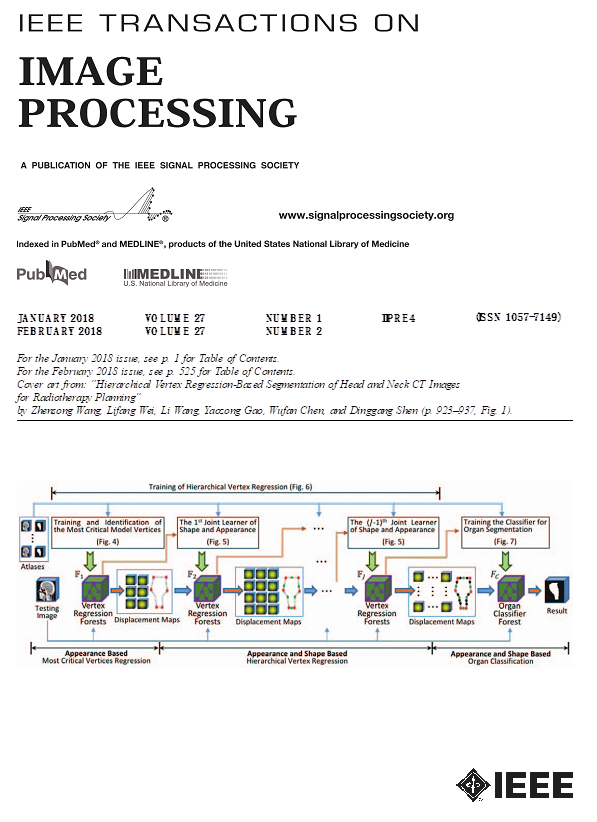Fast Video Recoloring via Curve-based Palettes.
IF 13.7
1区 计算机科学
Q1 COMPUTER SCIENCE, ARTIFICIAL INTELLIGENCE
引用次数: 0
Abstract
Color grading, as a crucial step in film post-production, plays an important role in emotional expression and artistic enhancement. Recently, a geometric palette-based approach to video recoloring has been introduced with impressive results. It offers an intuitive interface that allows users to alter the color of a video by manipulating a limited set of representative colors. However, this method has two primary limitations. Firstly, palette extraction is computationally expensive, often taking more than one hour to generate palettes even for medium-length videos, which significantly limits the practical application of color editing for longer videos. Secondly, the palette colors are less representative, and some primary colors may be omitted from the resulting palettes during topological simplification, making it less intuitive in color editing. To overcome these limitations, in this paper, we propose a novel approach to video recoloring. The core of our method is a set of Bézier curves that connect the dominant colors throughout the input video. By slicing these Bézier curves in RGBT space, per-frame palette can be naturally derived. During recoloring, users can select several frames of interest and modify their corresponding palettes to change the color of the video. Our method is simple and intuitive, enabling compelling time-varying recoloring results. Compared to existing methods, our approach is more efficient in palette extraction and can effectively capture the dominant colors of the video. Extensive experiments demonstrate the effectiveness of our method.通过基于曲线的调色板快速视频重新着色。
色彩调色作为电影后期制作的重要环节,在情感表达和艺术提升方面发挥着重要作用。最近,一种基于几何调色板的视频重着色方法已经被引入,并取得了令人印象深刻的结果。它提供了一个直观的界面,允许用户通过操纵一组有限的代表性颜色来改变视频的颜色。然而,这种方法有两个主要的局限性。首先,调色板提取的计算成本很高,即使对于中等长度的视频,也通常需要一个多小时来生成调色板,这极大地限制了对较长视频进行色彩编辑的实际应用。其次,调色板的颜色代表性较差,在拓扑简化过程中可能会遗漏一些原色,使其在颜色编辑时不那么直观。为了克服这些限制,在本文中,我们提出了一种新的视频重着色方法。我们方法的核心是一组bsamzier曲线,它们连接了整个输入视频的主色。通过在RGBT空间中切割这些bsamzier曲线,可以自然地推导出每帧调色板。在重新着色过程中,用户可以选择几个感兴趣的帧,并修改它们对应的调色板来改变视频的颜色。我们的方法简单直观,实现了令人信服的时变重着色结果。与现有的方法相比,我们的方法在调色板提取方面效率更高,可以有效地捕获视频的主色调。大量的实验证明了该方法的有效性。
本文章由计算机程序翻译,如有差异,请以英文原文为准。
求助全文
约1分钟内获得全文
求助全文
来源期刊

IEEE Transactions on Image Processing
工程技术-工程:电子与电气
CiteScore
20.90
自引率
6.60%
发文量
774
审稿时长
7.6 months
期刊介绍:
The IEEE Transactions on Image Processing delves into groundbreaking theories, algorithms, and structures concerning the generation, acquisition, manipulation, transmission, scrutiny, and presentation of images, video, and multidimensional signals across diverse applications. Topics span mathematical, statistical, and perceptual aspects, encompassing modeling, representation, formation, coding, filtering, enhancement, restoration, rendering, halftoning, search, and analysis of images, video, and multidimensional signals. Pertinent applications range from image and video communications to electronic imaging, biomedical imaging, image and video systems, and remote sensing.
 求助内容:
求助内容: 应助结果提醒方式:
应助结果提醒方式:


